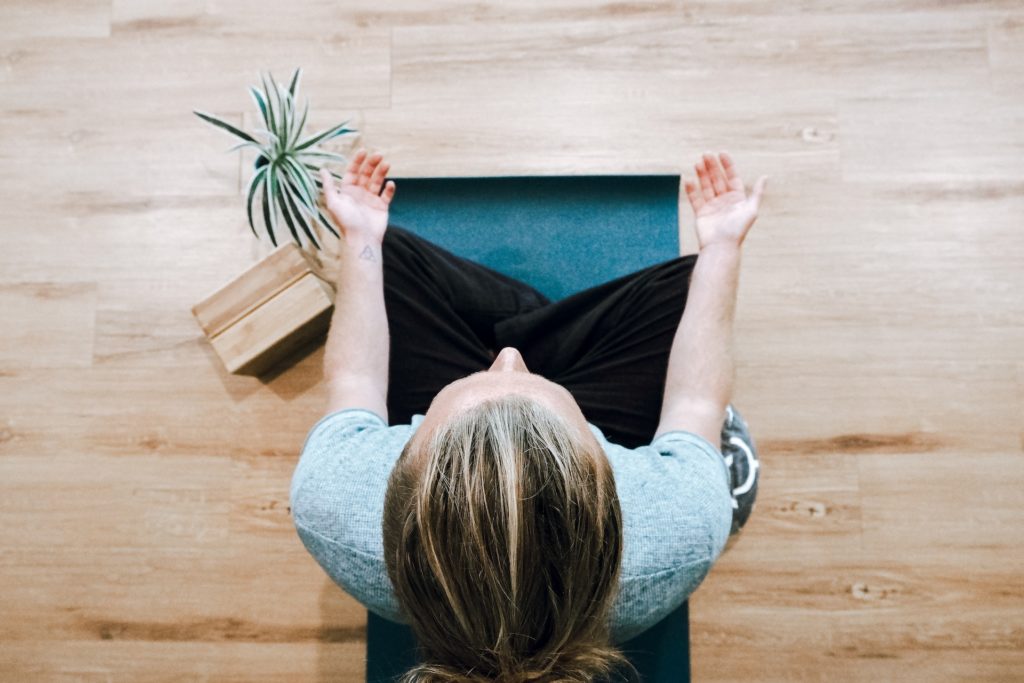In the stressed-out age we live in it’s no wonder that the number of people practicing meditation has more than tripled between 2012 and 2018, according to a report from the Centers for Disease Control. Meditation offers several benefits including improved mood, increased focus, reduced stress and anxiety, and improved immune function. And you don’t have to meditate for an hour every day to experience benefits.
For some, the benefits of meditation can be felt after one session. Research shows that you don’t have to meditate every single day, but that benefits are tied to consistent practice. Suggesting that 10-20 minutes of meditation done at least three times a week will reap real benefits. But the key is consistency.
“While it’s true that any time you’re paying attention to the present moment experience you are engaging in mindful practice, no single mindfulness practice makes as much of a difference in your day as meditation.”

Getting started is easier than you think, and the payoff is worth the time and effort. If you’ve never meditated before, or if it’s been a long time, starting with even five or ten minutes can help set the stage for a sustainable practice. Even if you think you can’t sit still for one minute let alone ten, this is a practice that everyone can do. Here are some simple tips to get started with a sustainable practice of your own:
Create A Space
Set up a “sanctuary.” Make sure it’s a calm and comfortable environment that supports your practice and a sense of well-being. Add some flowers. Or candles. Or both!
Get Comfortable
You don’t need to sit on the floor with legs crossed in the lotus position. Sit in a chair with your feet on the floor. Or, if you’re more flexible, you can sit on a meditation cushion or bolster with your legs crossed. For people who’ve had hip or knee replacements, it may be more comfortable to lay down.
Posture
Posture is important. You want to be comfortable yet alert. Or as Cory Muscara, leading mindfulness meditation expert says, “Sit upright, not uptight.” Meaning, your head and neck are in line with your spine. Shoulders are relaxed. The throat and chest are open to allow the breath to flow freely.
Make It A Ritual
Again, have a designated spot where you can meditate. Practice at the same time every day. Mornings and before bed are great times but pick a time that works best for your schedule and stick to it. Remember that consistency is key.
Start Small and Practice, Practice, Practice
If meditating for ten minutes seems overwhelming, begin with five or even three minutes. Start where you are, even if it’s one minute of focused breathing a few times a day. Every time the mind wanders, bring your attention back to the breath. Think of it as a form of mental fitness – a bicep curl for your mind. Each time you sit down to practice you are training your brain to focus and to be at peace.
See if after a week you can build upon your practice by adding a minute each week. Ultimately building up to a ten or twenty-minute practice, at least three times per week.
Be Kind To Yourself
There is no right or wrong way to practice. Remember that it’s a process, one that takes time, effort, and dedication to begin experiencing the many benefits. Simply sitting down to practice meditation is a radical act of self-love.
If you’re struggling in your practice, don’t give up! Remember that mindfulness is simple, not easy. We’ve been conditioned into a state of doing and being productive all of the time. So we must relearn how to be still. How to trust in simply being. So again, start where you are and be kind to yourself in those moments of struggle. I promise that if you commit to a consistent practice, you’ll soon begin to experience more peace and clarity in your life!
Practice With A Friend or Group

Find a friend who’s interested in meditating, or join a local or online meditation community. Accountability can help quell our excuses and help us stay committed to our meditation goals when we’re tempted to give up. A bonus to meditating in a group is that it helps reinforce our sense of connectedness.
Breathe
Our minds are always thinking. A new study from psychologists at Queen’s University in Kingston, Ontario reports that, according to fMRI brain scans, the average human has 6,200 new thoughts per day. That’s a lot of thoughts! It’s easy to see how easily we can become detached from the present moment when we’re bombarded by thoughts of the past and worries of the future.
However, by focusing on your breath, you are anchored into the present moment. The breath is only in the here and now. Whether you are sitting down in formal meditation, or you only have a few moments while standing in line at the store, resting your focus on your breath can help negative thoughts from gaining momentum and reconnect you with the present moment.
Get started today with this five-minute breath awareness meditation:
I hope you enjoy this practice. May it serve you in your journey.
